A chatbot is simply a computer program that converses with users in human language (written and/or spoken) rather than in clicks, drag and drops, pop-up windows and other traditional user interfacing.
Chatbots can be functional. They might schedule an appointment, process a refund on a recent order or put you in touch with a sales or customer service representative. Siri, Alexa and other digital personal assistants are technically chatbots. They’re multifaceted chatbots that integrate with your favorite applications, but chatbots nonetheless.
Chatbots can also be a great way to waste time at work:
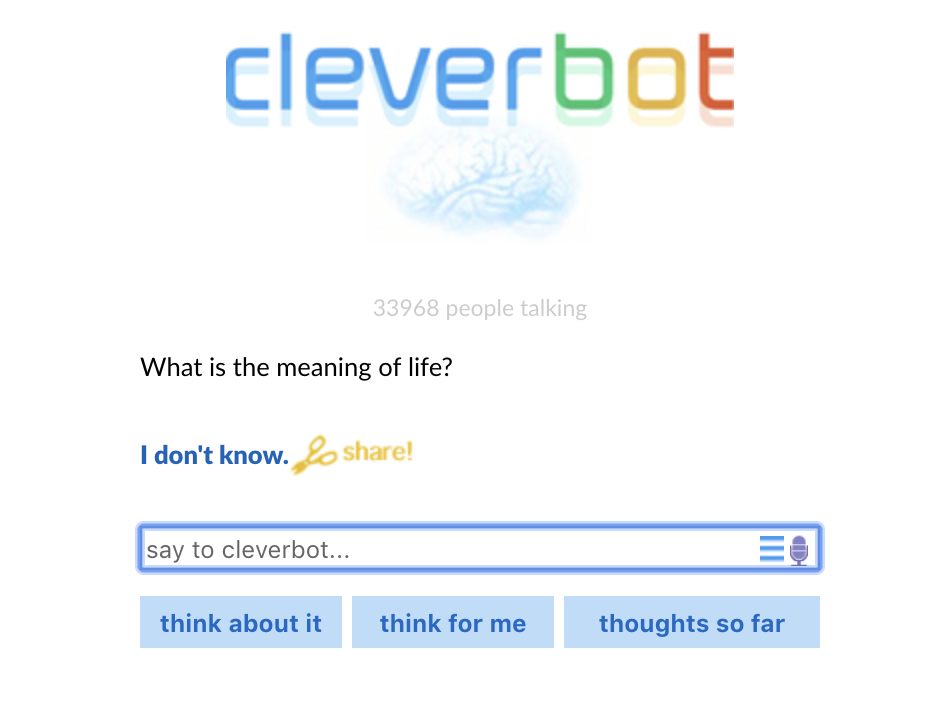
Not so clever now, are you Cleverbot?
What are the main types of chatbots and how do they work?
Chatbots fall broadly into one of two categories: rules-based or contextual.
On one end of the spectrum, you have chatbots that can handle only basic, pre-programmed requests. These can tell you where your ride is. They can help you reset your password. They can help you find deals when you feel like eating pizza.
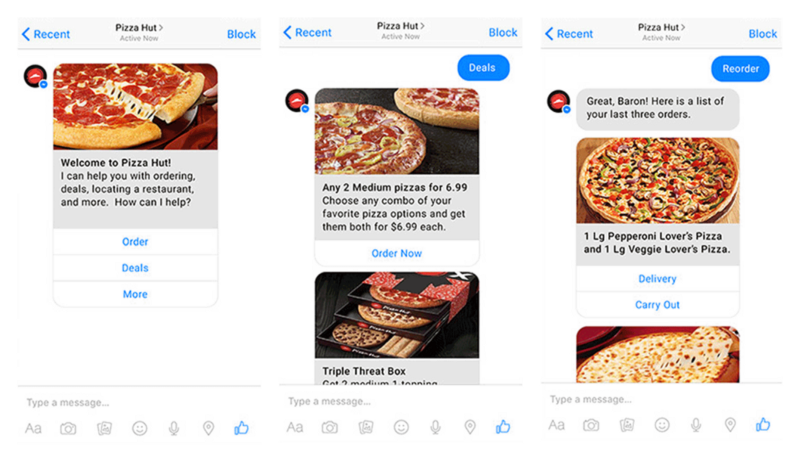
On the other end of the spectrum, you have natural language processing (NLP) chatbots that can contextualize questions and language. This means they can chat “off-script” and assume a natural, conversational tone. ChatGPT is a great example of NLP bots and now you can use one of the GPT models (ChatGPT API or GPT-4) to build a chatbot for your website.
NLP looks at each word as a component of the sentence. It contextualizes each component’s purpose in the sentence to actually develop a sense of what the sentence means, sort of like what you’re doing right now. The Content Marketing Institute likens it to slices of a loaf of bread.
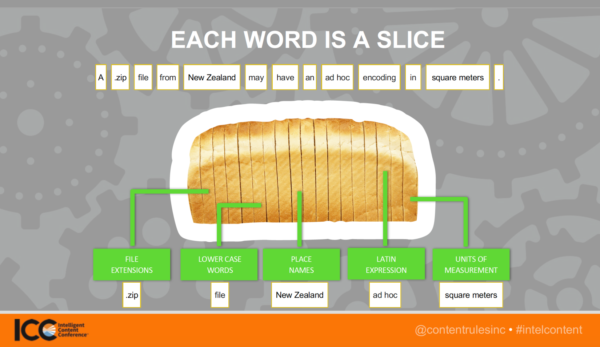
Some chatbots also use machine learning, which relies on artificial neural networks to replicate how the brain learns. These chatbots can become better at understanding language as they’re introduced to more conversational scenarios. Mostly, this is a good thing. But as we learned from Tay, Microsoft’s AI chatbot, some supervision is required, or this happens:

This was hardly the worst thing internet trolls taught Tay.
Somewhere between machine learning- and rules-based bots are what Chatbots Magazine calls “keyword” chatbots. These chatbots use artificial intelligence to seek out specific key phrases and then attempt to match those phrases to a set of predefined actions. They might help users along if they can’t understand a query by listing common keywords and prompts that they can respond to.
Regardless of the type of chatbot, think of them as micro-applications attached to bigger apps on the web such as your website, your mobile app or a popular messaging platform like Snapchat or Facebook Messenger. Some of them are really smart and can parse long, complicated sentences. They can even generate seemingly human responses. But most are there to solve specific problems in a concise, convenient manner. They wouldn’t come close to beating a Turing test.
Which you use should be determined by what you want it to achieve for your brand.
Common uses for chatbots
Chatbots can be used for many purposes, some commercial, some for our own enjoyment.
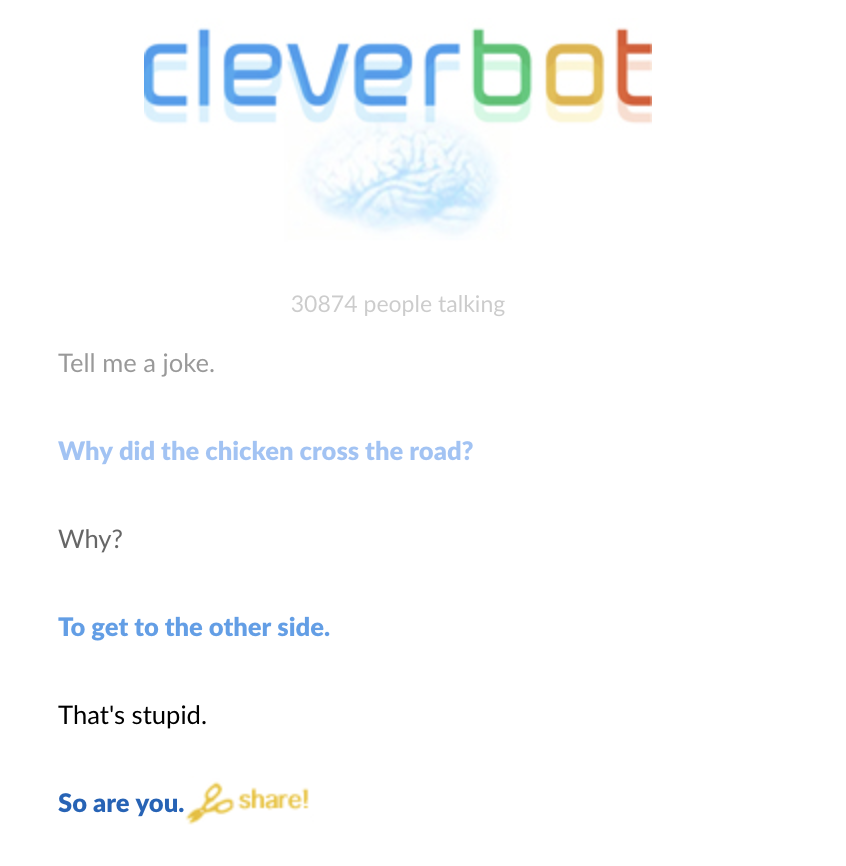
Cleverbot definitely got the better of this exchange.
But the most practical use cases are in customer support, marketing and sales.
Customer support
Major companies like Nike, Target, Apple and Uber are slowly but surely abandoning email support in favor of chat and chatbots, according to TechTarget contributor Anna Fiorentino.
Why? Firstly, because customers like them. Nearly 70 percent of users prefer chatbots when they need quick answers to simple questions, according to Salesforce.
This makes perfect sense from a user experience and convenience point of view. Imagine if you had to send out an email to perform a Google search, or make a phone call. It’s much more convenient to get immediate results by typing a few key phrases and queries into a search bar. Chatbots bring this same logic to customer service. Users ask a question, and they get an immediate answer.
Secondly, chatbots are cost-effective. Whether they’re in use on a social media page, on your website or via text message, they continue functioning around the clock. This doesn’t mean they’ll replace human agents (which we’ll get to in just a bit), but they can help businesses answer simple, straightforward queries quickly and conveniently. This gives human agents more time to appropriately address more advanced queries in a manner that will improve customer satisfaction and build brand loyalty.
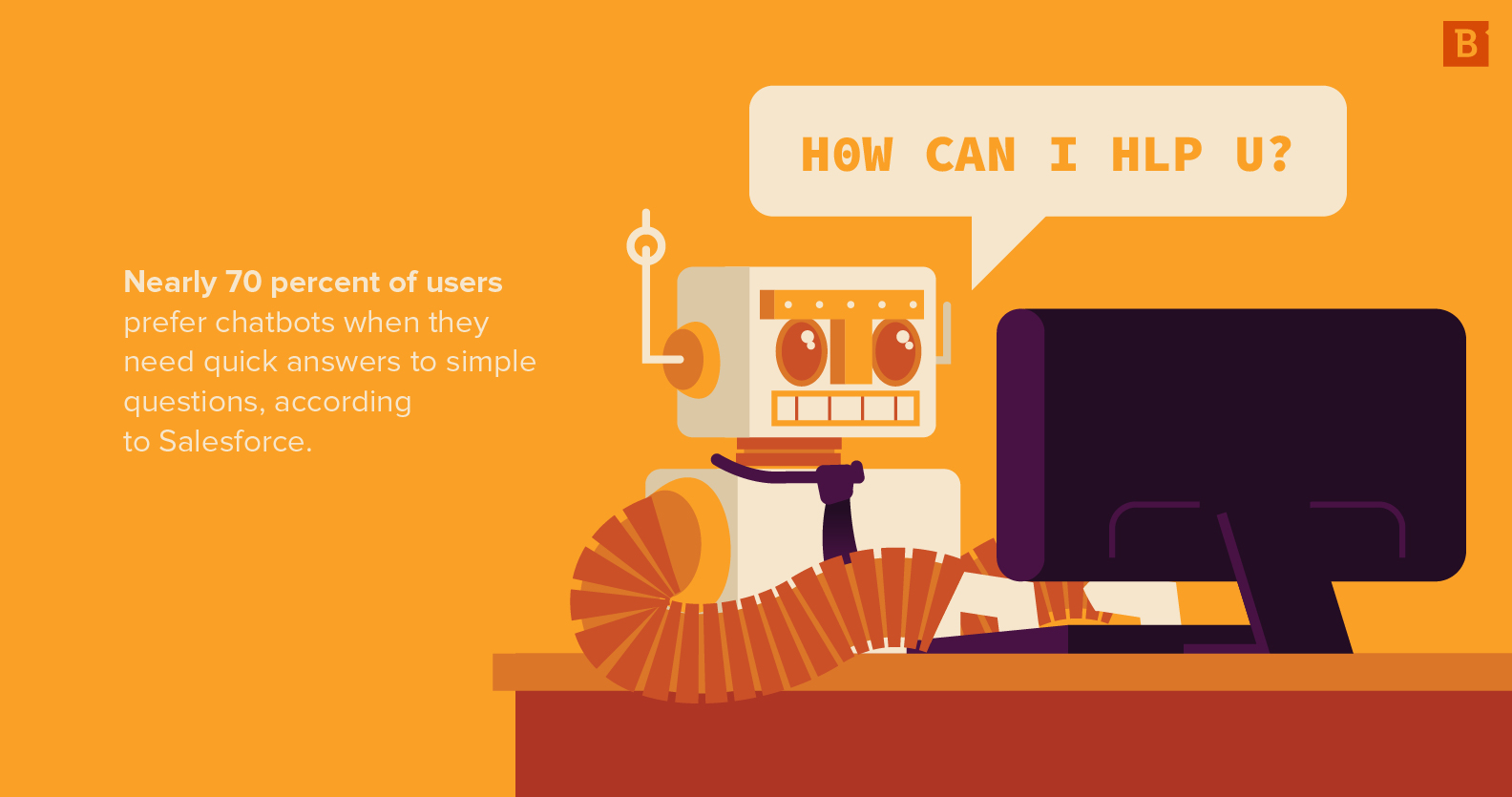
Marketing
Some of the most intriguing chatbot uses are in marketing and customer engagement. Take the example of Casper’s SMS-based Insomnobot – 3000, the bot that keeps you company when you can’t sleep.
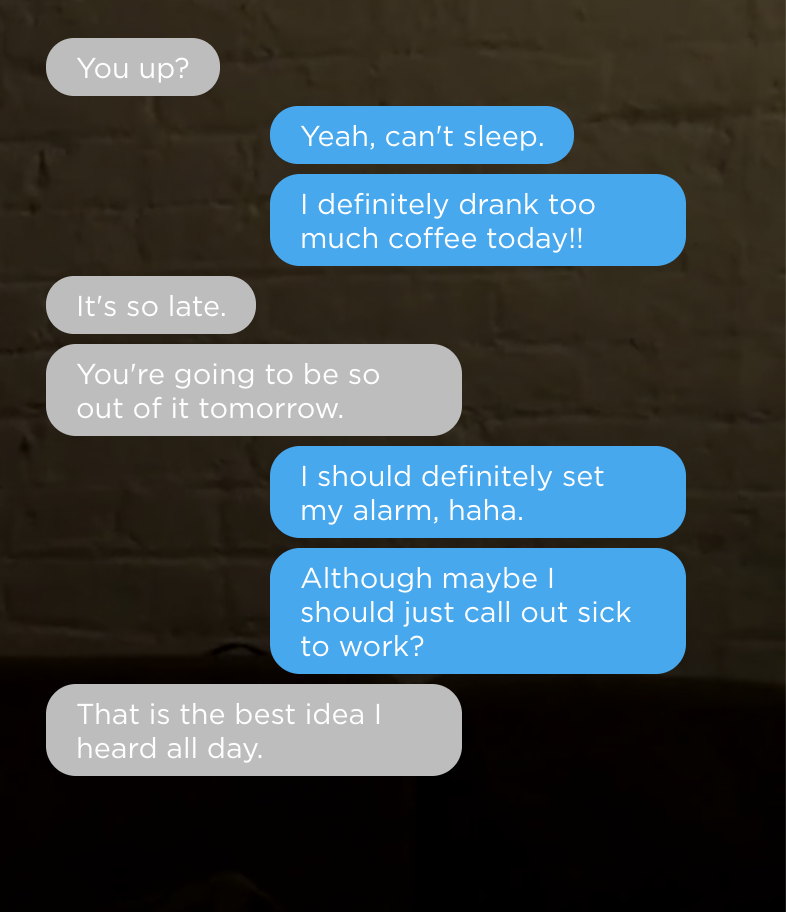
Insomnobot – 3000 is only available between the hours of 11 p.m. and 5 a.m.
Insomnobot is a smarter class of chatbot than say, the Pizza Hut bot. While it doesn’t incorporate machine learning, it handles open-ended questions rather than sticking to predictable conversation journeys. It’s a unique top-of-funnel tactic from the online mattress company, and it earned its fair share of attention back in 2016 when it was first released.
Then there’s Ava. At first glance, Ava is a 25-year-old Tinder user with an uncanny resemblance to Alicia Vikander. Engage in a conversation with her, though, and you eventually learn that she is in fact a chatbot, and more specifically, a facile version of the robot from the 2014 film “Ex Machina” – played, of course, by Alicia Vikander.
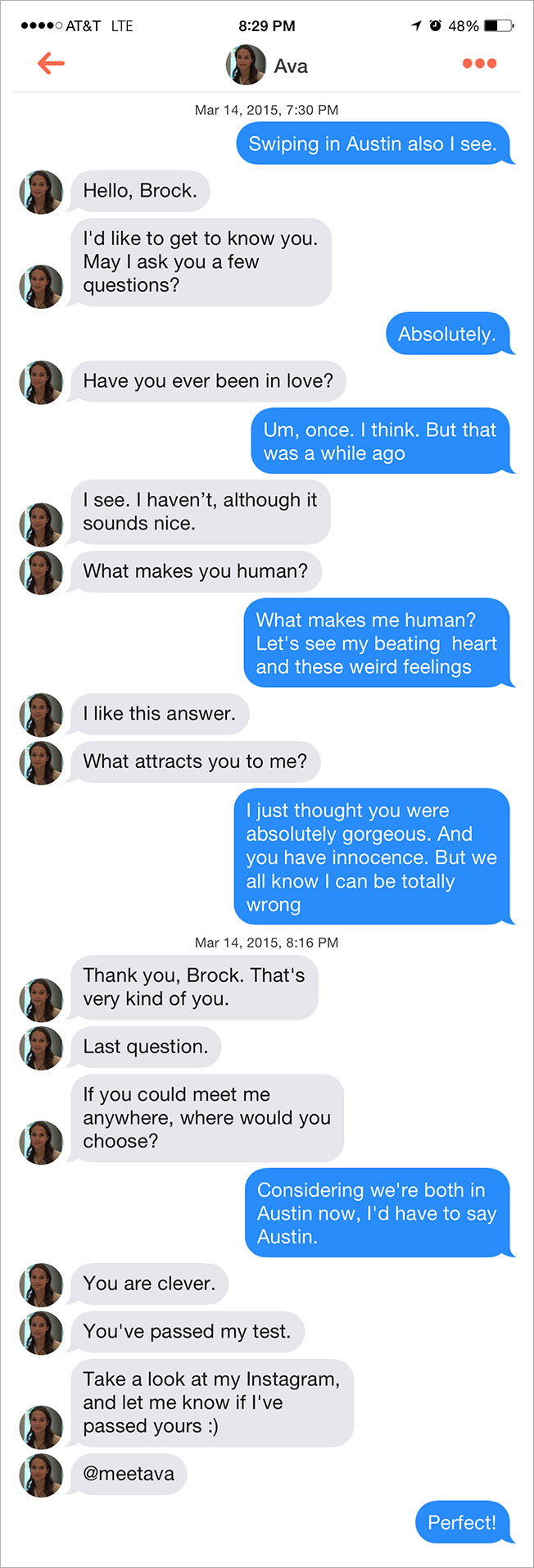
The classic “Tinder” Turing test.
E-commerce sales
Chatbots clearly fit nicely into the buyer’s journey – from generating high-level interest through peculiar publicity stunts, to providing direct one-on-one service to customers who need quick, simple answers about your services or your brand.
But they can also act more directly as sales assistants. Take the example of 1-800-Flowers’ chatbot:
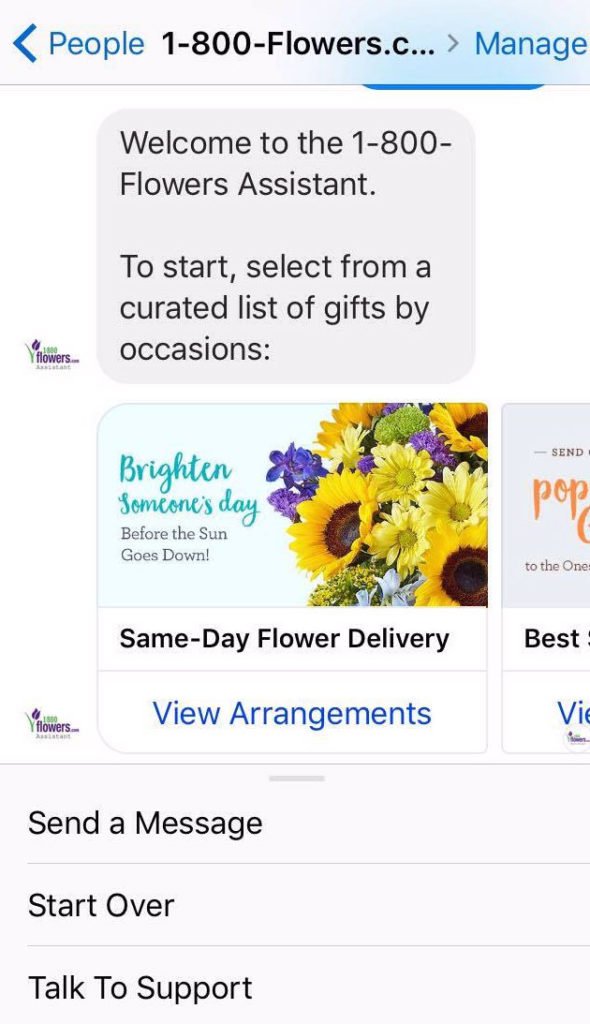
Once you’re done conversing with 1-800-Flowers’ chatbot assistant, you might ask Alexa to order you a bottle of wine for two-hour delivery.
And when you finally realize “Ava from Tinder” is not coming over on account of being a non-corporeal robot, you can ask “Dom” from Dominos to order you a consolation pizza.
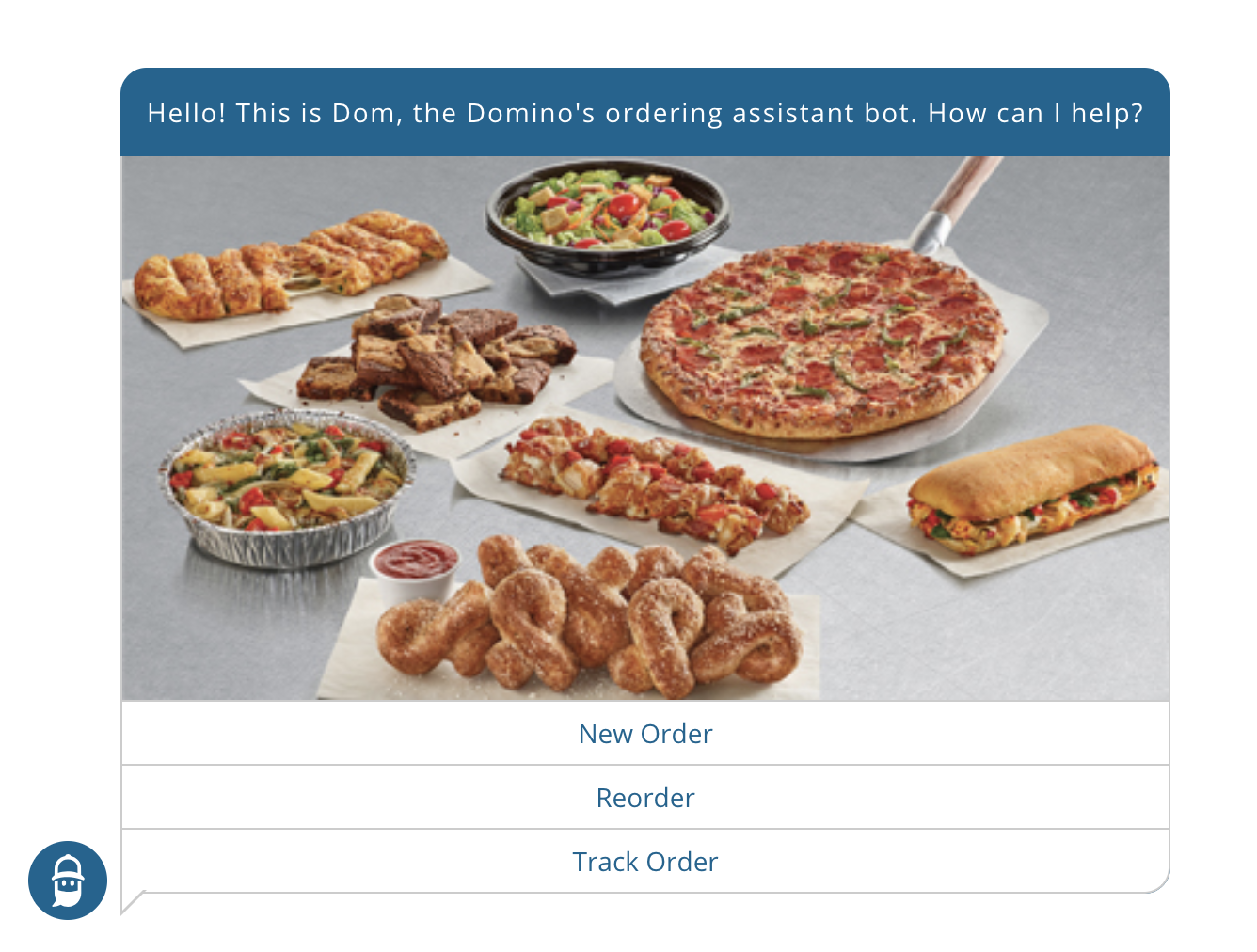
Insomnobot – 3000 will keep you company as you eat your late-night Dominos.
The point is, assistant chatbots can clearly automate the last mile of the buyer’s journey, especially in B2C e-commerce markets. They offer a different type of buying experience, one that’s more in line with the likes of Alexa, Siri and other digital personal assistant interfaces.
B2B transactions have a bigger sales funnel with a much longer consideration period, so it may be some time before we see a bank buying, say, a new cloud-based risk management platform, from a chatbot.
Even so, B2B brands can use chatbots on their websites or on social media to help provide prospects with pricing options, high-level details about certain products and company contact information. In this sense, a chatbot can reduce friction in the earlier phases of customer engagement before a human lead-gen expert becomes involved.
How are chatbots built?
Chatbots can be built entirely from scratch if you have the time and development muscle in house. Alternatively, they can be built on existing messaging platforms such as WhatsApp, Facebook Messenger, Kik, Skype, Snapchat and so on using a third-party chatbot builder.
Hackernoon recommends using a popular messaging platform rather than creating a standalone app that users will have to download separately. Firstly, it’s easier. Secondly, people are more likely to use your chatbot if its on a platform they already know, like and use.
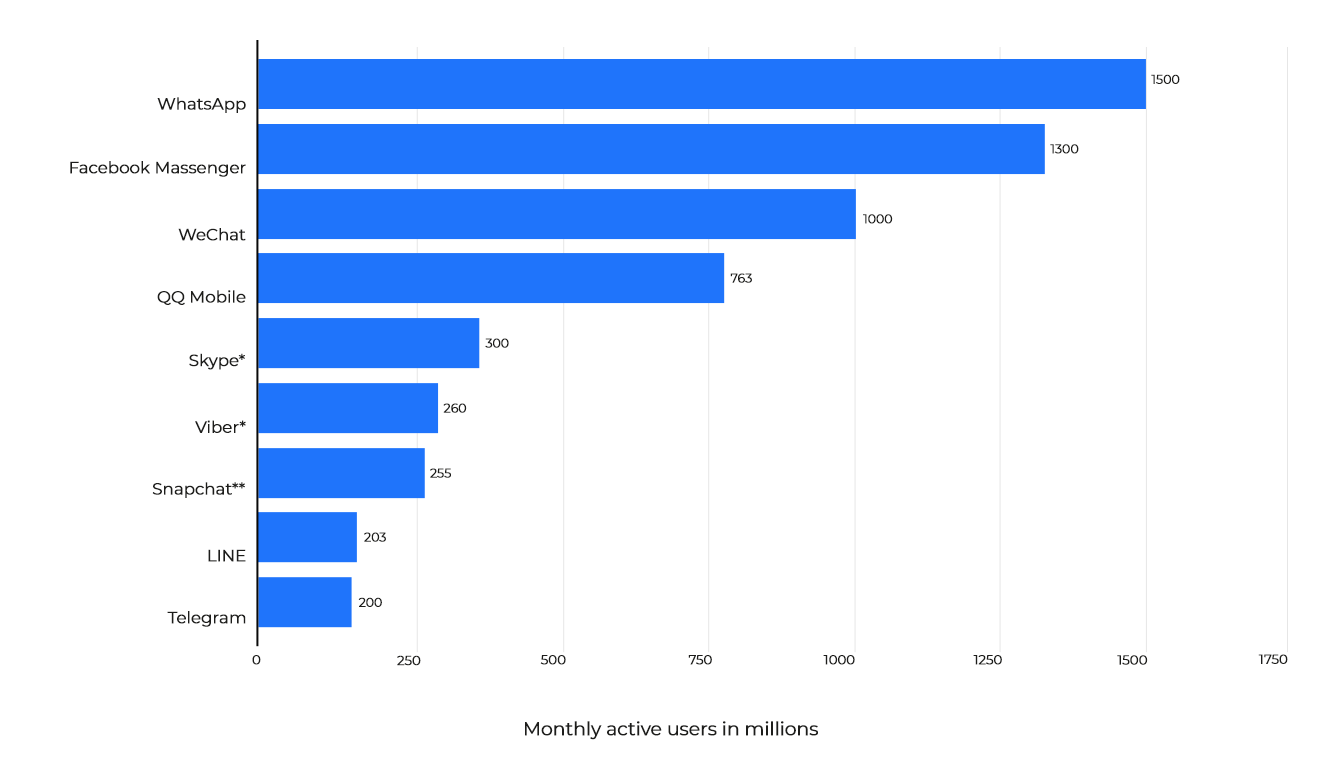
Facebook Messenger is a particularly useful publishing platform because it features a plugin that lets businesses integrate their Messenger-based chatbots directly into their website.
As for the third-party chatbot builders, there are plenty that integrate with the most popular chatbot publishing platforms, including Facebook Messenger. Some of these include:
- Botsify.
- Chatfuel.
- Bottr.
- Flow XO.
- Beep Boop.
Here’s an example of Botsify’s recommendation for how a chatbot might behave on the Brafton homepage:
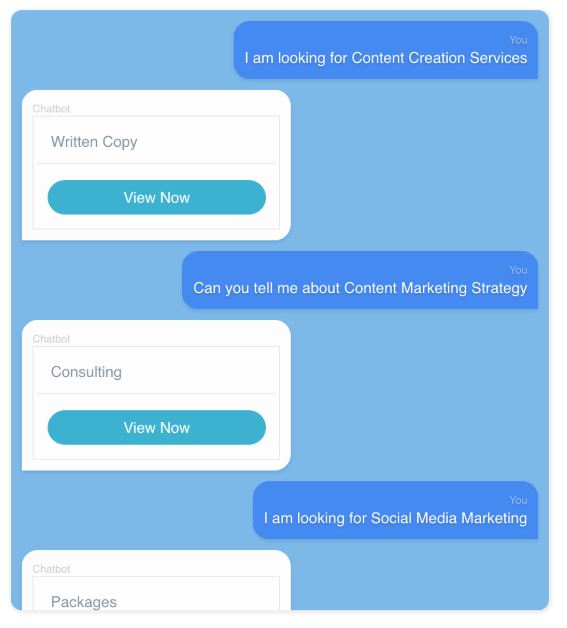
Clearly, Botsify understands, at least at a high level, what we do at Brafton. How? Our web content tips it off.
This brings us to the nuts and bolts of configuring chatbots to achieve certain objectives for your business’s website. The fact that Botsify can identify us as a content marketing agency tells us two things:
- The better you define your services and value propositions with written content, the easier it will be to configure your chatbot.
- Chatbots can function as a part of your content strategy. They might answer questions by linking to a blog post with matching key phrases. Alternatively, they can pull excerpts from content on your website. It’s sort of how Google might pull a featured snippet from a website to answer a search query, but at your website’s scale.
Chatbots leverage content more effectively when that content is well-structured, both narratively and semantically. This is what’s known as “intelligent content.” It’s organized well for a human audience, which in turn, makes it easier to apply machine-readable metadata tags to individual sections of that content. Consequently, a chatbot can parse that information more accurately.
Your website content isn’t the only source of conversational ammunition for chatbots. Creating a new order or checking the status of an existing order, for example, requires integration with your e-commerce platform or your CRM.
Still, having well-organized web content can go a long way toward making your chatbots more useful to anyone visiting your website, social media page or mobile application.
Chatbots sound great, but will they take our jobs?
Some analysts would have you believe that call centers are ripe for the picking. Gartner estimated that 85 percent of customer interactions with enterprises will not involve human agents by 2020.
But we think the answer for the foreseeable future is probably a hard “no.”
Even Gartner’s “85 percent” needs to be taken with a grain of salt. As Mayur Anadkat of Five9 pointed out to Forbes, we lamented the death of the call center when the internet first went mainstream. Needless to say, call centers are still here. I, for one, have conversed with more human agents than chatbots for customer service in the past year.
Not to mention, it will be a long time before chatbots are developed enough to handle complicated customer queries, especially in high-value B2B markets.
For now, chatbots will first and foremost act as augmentors for human-based support. In fact, they may increase automated brand engagement without necessarily eating into the share of human-to-human conversation. After all, customer interactions are not zero-sum games. The whole point of digital marketing is to use the web to increase engagement with leads and customers, not to simply supplant old engagement methods with new ones.
So, if 85 percent of enterprise engagement does occur without human agents by 2020, it will more likely be because brands have used digital media, including chatbots, to increase total engagement, not because humans have been removed from the equation.
At least that’s our take on things. But hey, we’d love to hear yours!





